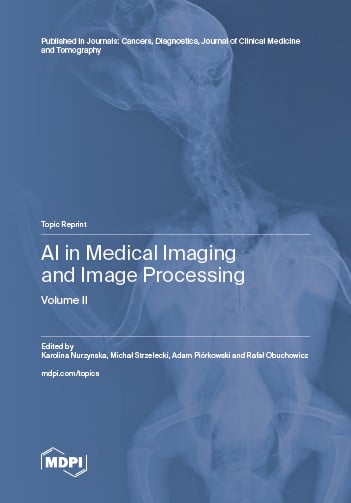- 2.2Impact Factor
- 3.5CiteScore
- 27 daysTime to First Decision
Tomography
Tomography is an international, peer-reviewed open access journal on imaging technologies published monthly online by MDPI.
Indexed in PubMed | Quartile Ranking JCR - Q2 (Radiology, Nuclear Medicine and Medical Imaging)
All Articles
News & Conferences
Issues
Open for Submission
Editor's Choice
Reprints of Collections

Reprint
AI in Medical Imaging and Image Processing
Volume IIEditors: Karolina Nurzynska, Michał Strzelecki, Adam Piórkowski, Rafał Obuchowicz

Reprint
AI in Medical Imaging and Image Processing
Volume IEditors: Karolina Nurzynska, Michał Strzelecki, Adam Piórkowski, Rafał Obuchowicz

